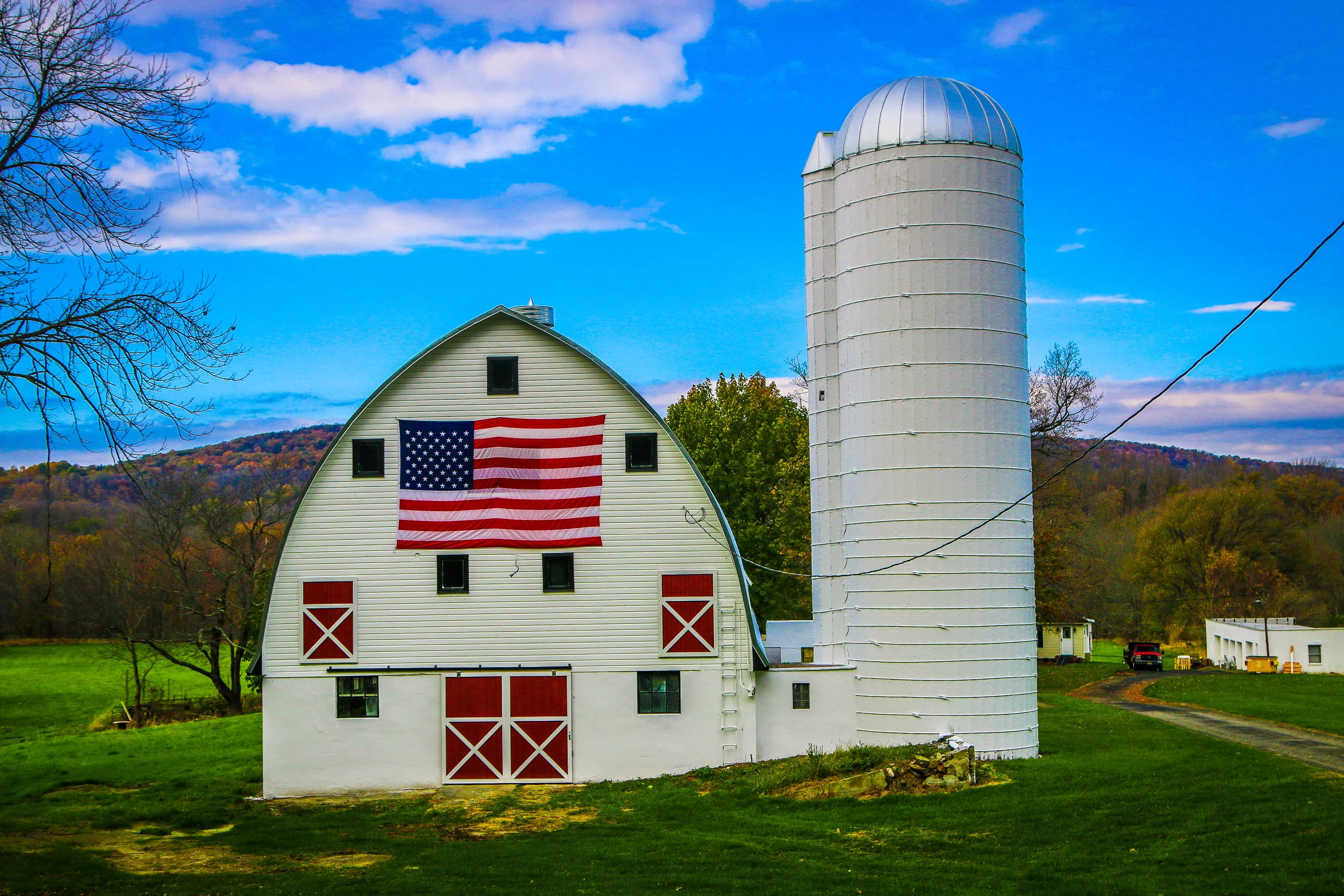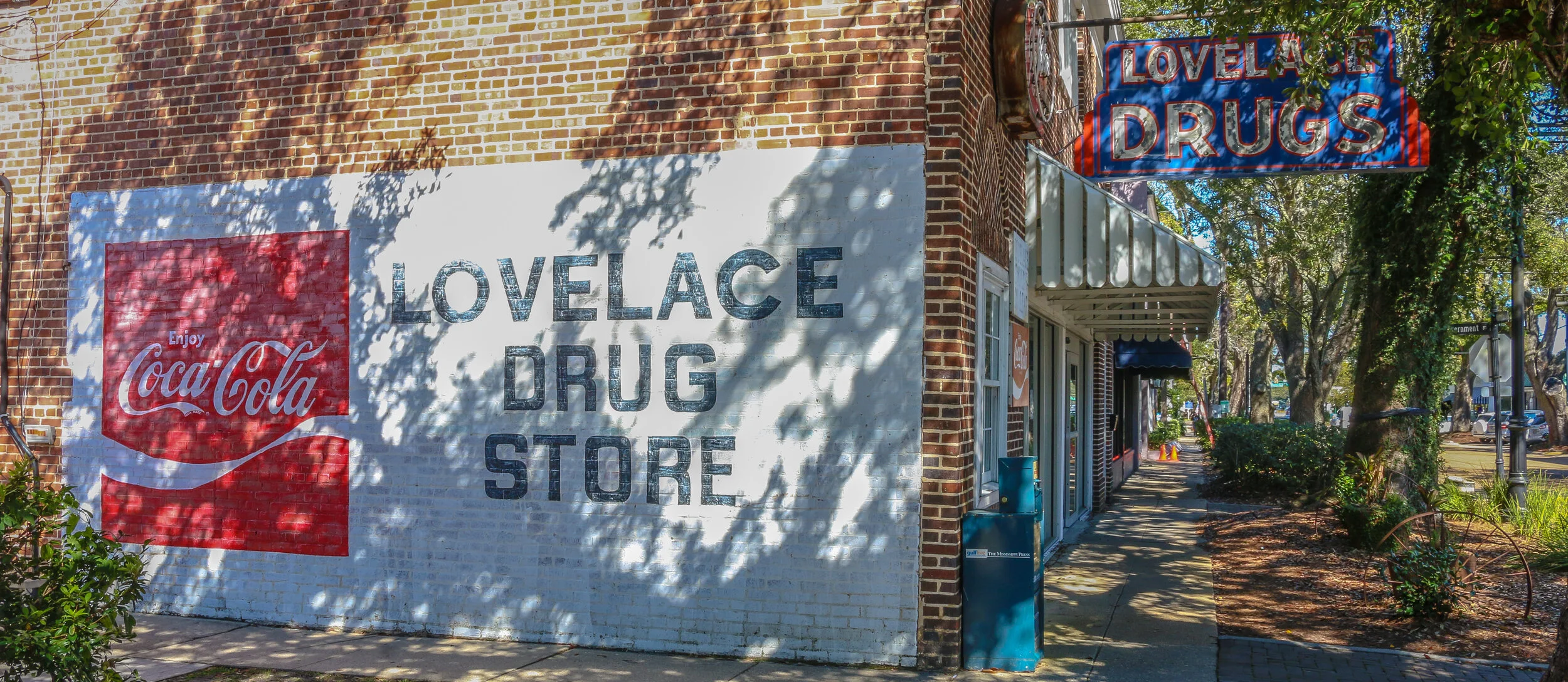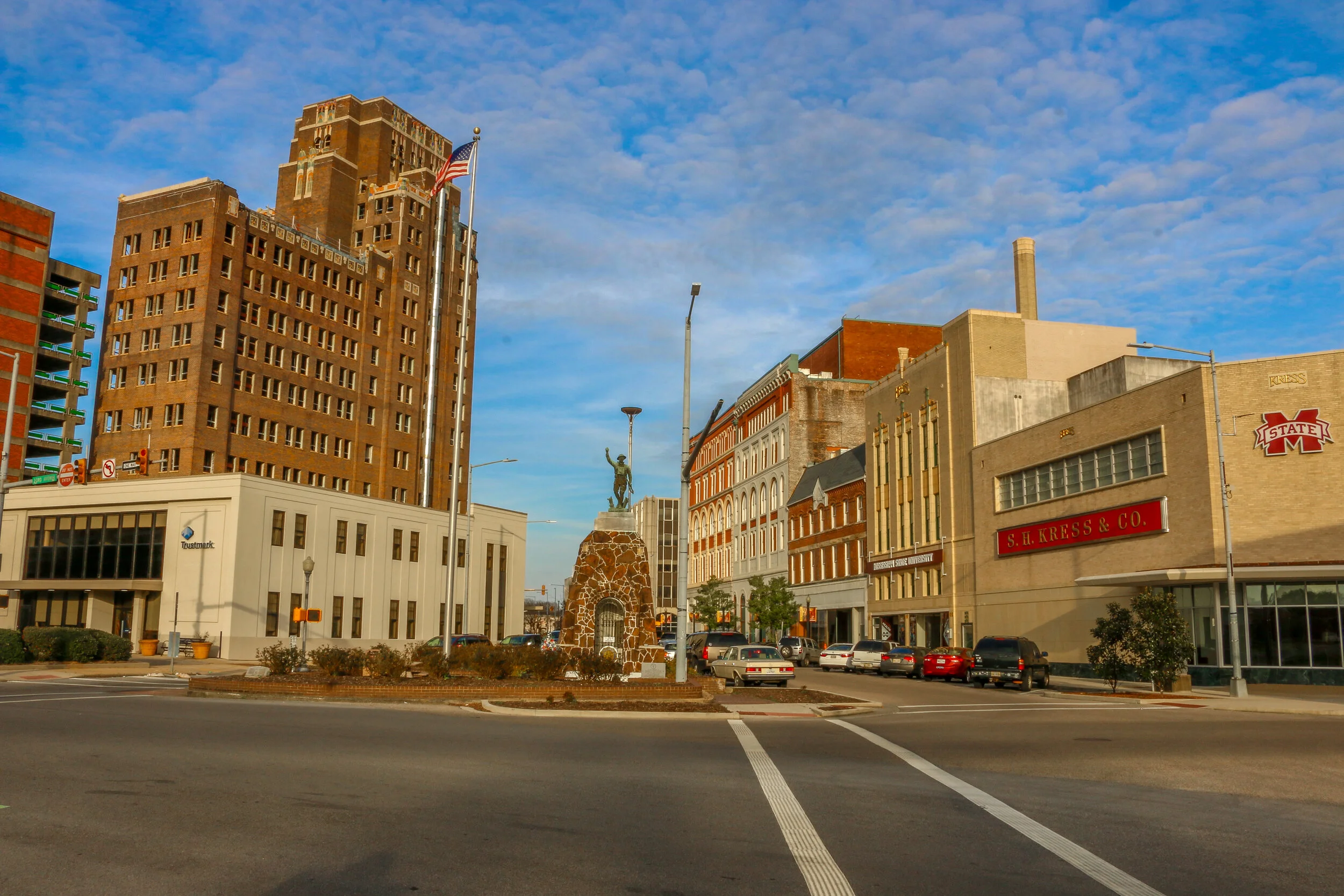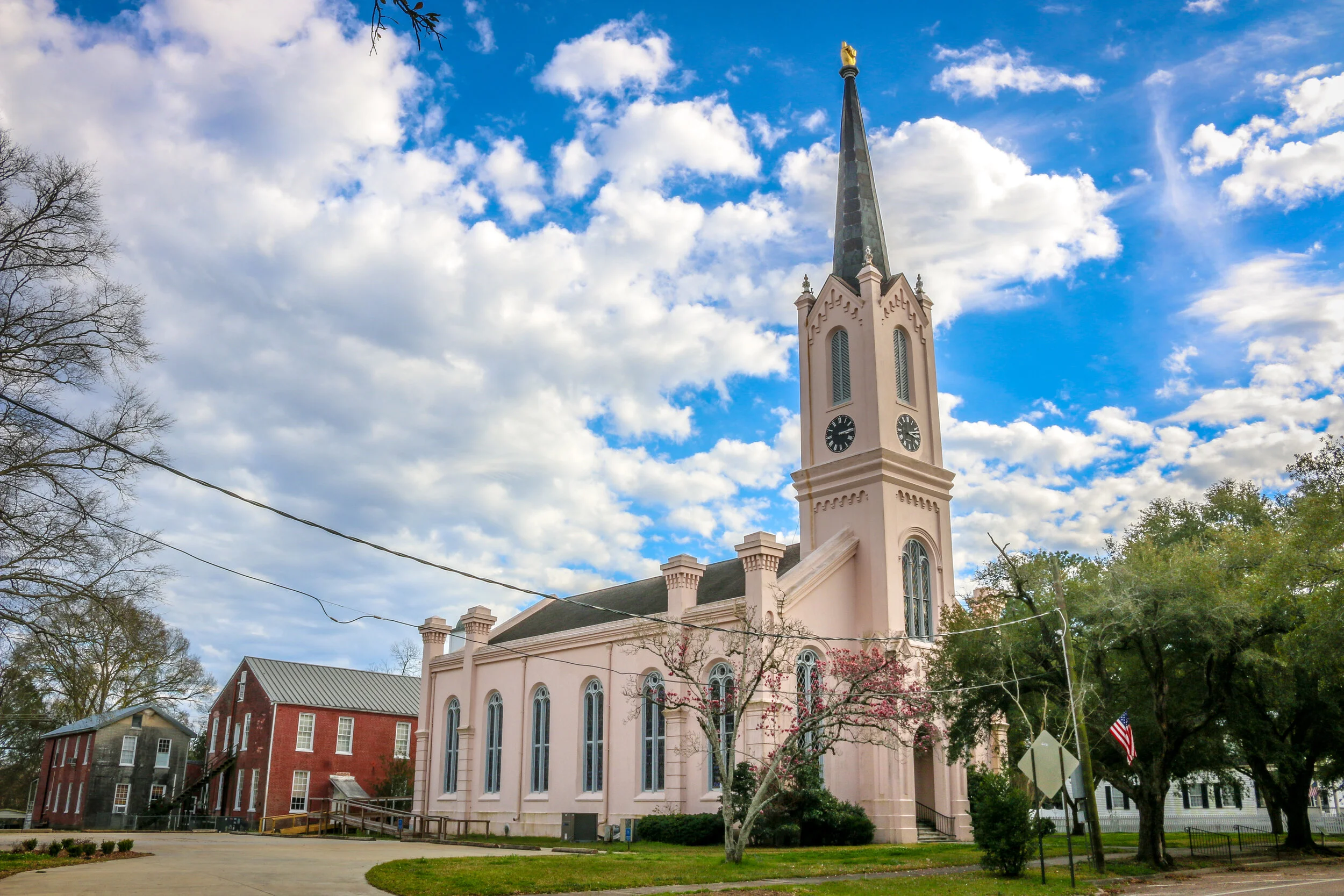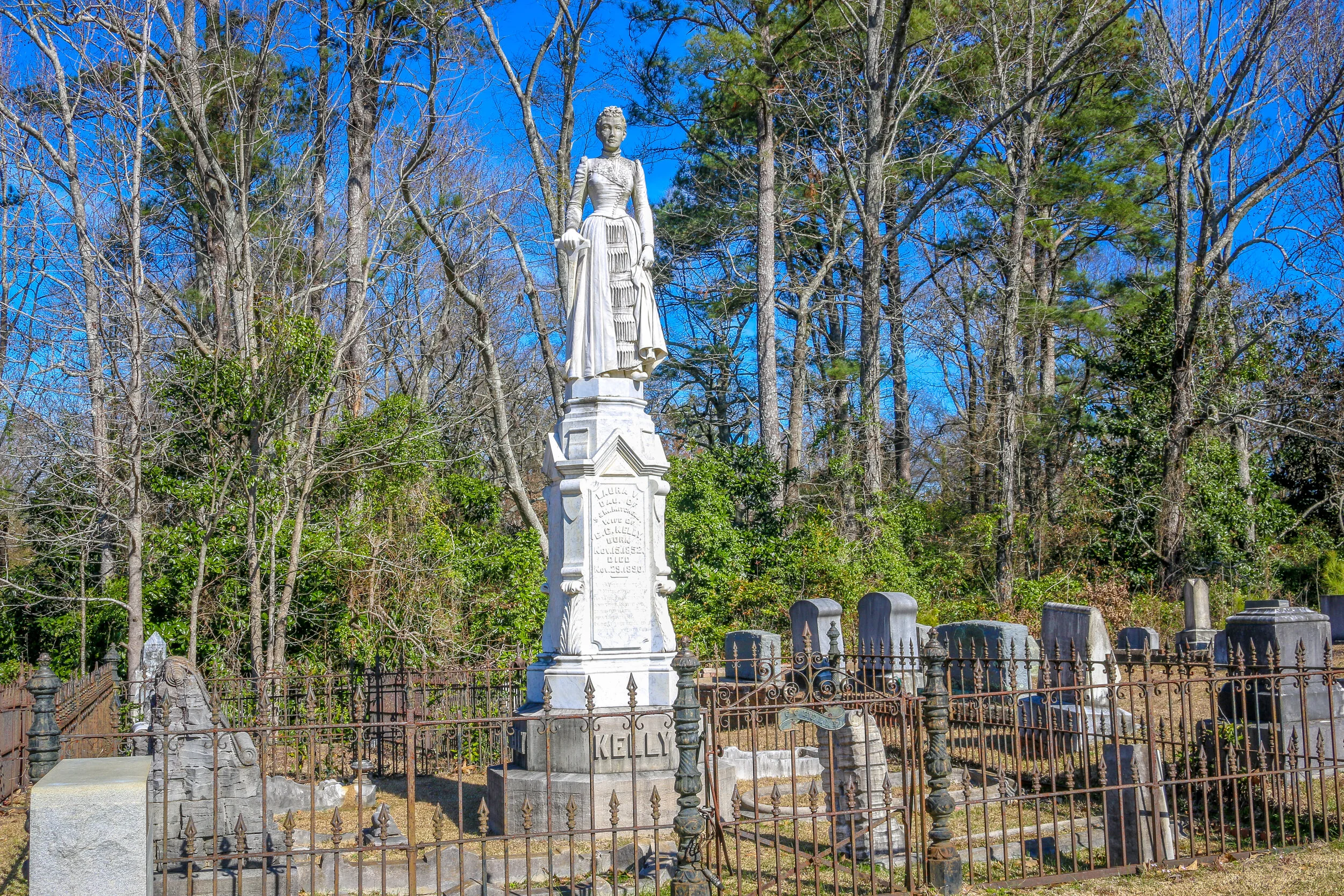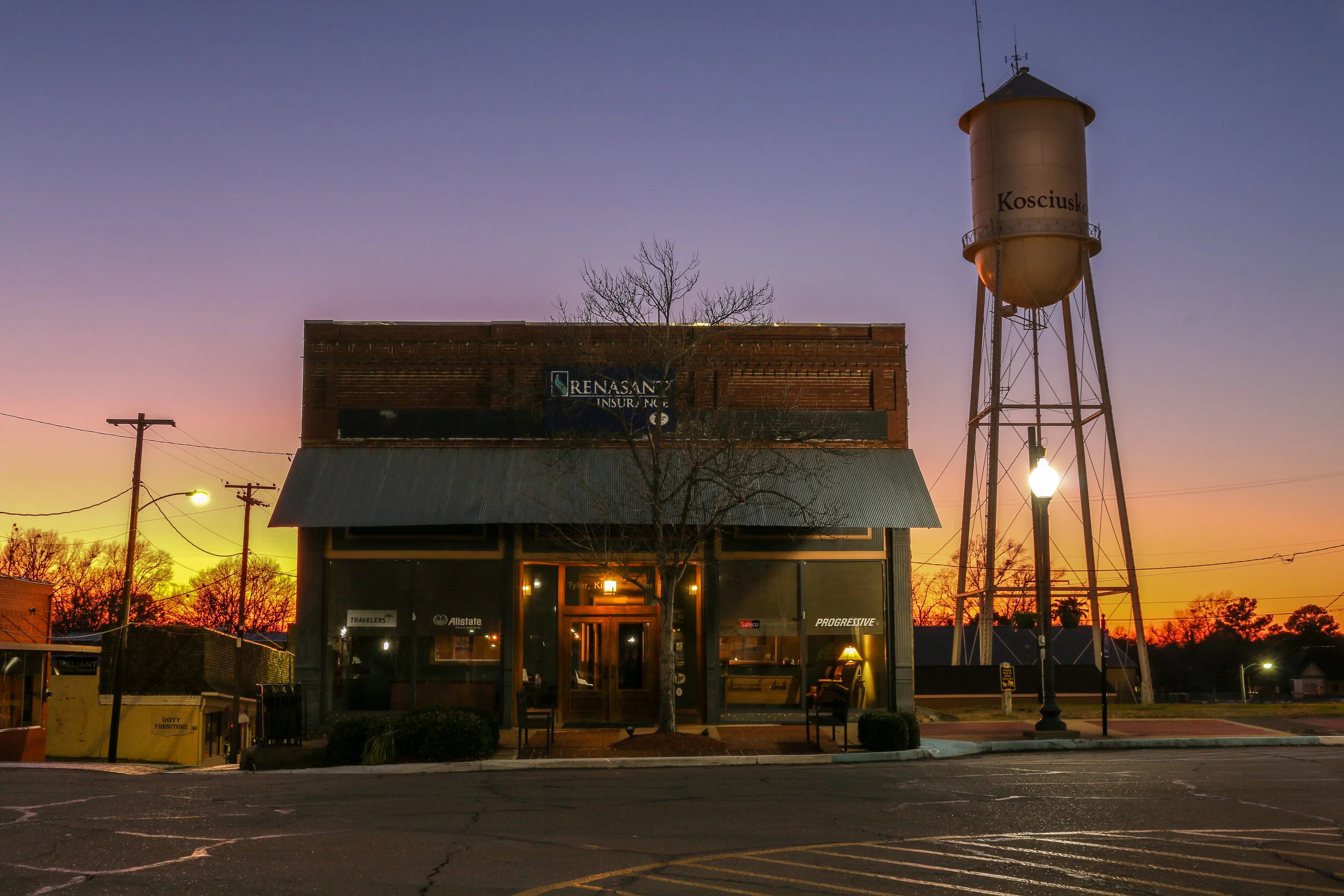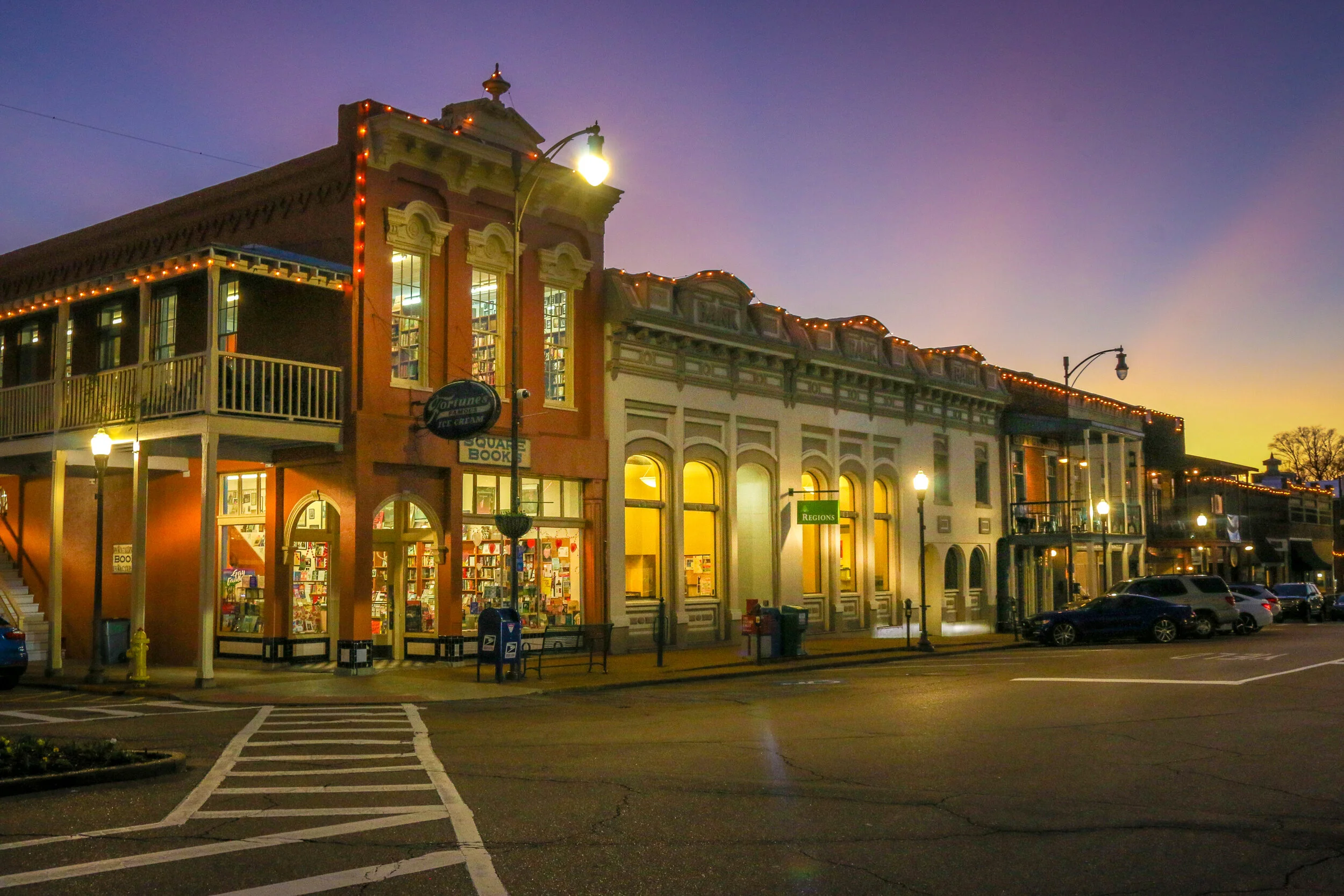What exactly is Galveston? Is it a typically Southern town? An island with a beach vibe? An historic port city like New Orleans? A Texan town? The answer to all of those is “yes”. Galveston is a fascinating place with so much to offer. Even after a few days there I felt like I had only begun to scratch the surface of the Queen City of the Gulf.
The first non-natives to inhabit Galveston came in 1816 with the pirate Louis-Michel Aury. When Aury went on a raid the following year, he returned to find that the island had been occupied by the infamous pirate Jean Lafitte. Lafitte set up a “Pirate Kingdom” there and remained with his people for the next 5 years. The Port of Galveston was established under the Mexican government in 1825, and the town would serve briefly as the capital of the Independent Republic of Texas in 1836. Galveston, along with the rest of Texas, joined the Confederacy during the Civil War and became a target due to its major port…
Beaumont, Texas traces its roots back to 1824 when Bobby and Nancy Tevis settled on the Neches River and built a small farm. A community grew up around them called Tevis Bluff. Developers Henry Millard, Joseph Pulsifer and Thomas Byers Huling purchased all of the land in the area in 1835 and began selling lots in a town to be called “Beaumont” after Henry Millard’s wife Mary Beaumont. Lumber, cattle and rice were early drivers of the local economy, as was the port which got these products to market. That all changed in 1901 when oil was discovered at Spindletop, and America’s first oil field was developed right there in Beaumont. The town’s population tripled almost overnight and oil has been the city’s main economic driver ever since. Today, Beaumont is a quiet city of about 120,000 people, with most living outside of the downtown core. I found the city to be charming, with a lot of great historical buildings. My favorites were the Jefferson Theater and Tyrell Historical Library. I was sad to see that despite some wonderful efforts at reviving the downtown area there didn’t seem to be much going on there during my visit. Regardless, I enjoyed my stay in Beaumont and it is definitely a city I will return to in the future.
On August 25th, 1699, Jean Baptiste LeMoyne, the Sieur d’Bienville was exploring the region that is now Mississippi’s Gulf Coast under a French flag and named this bay for King Louis IX. A small settlement was begun, consisting of just 16 soldiers. After the area was bought from France as part of the Louisiana Purchase of 1803, it was opened to homesteaders and thousands of people poured in from the Upper South. The town, originally called Shieldsboro, was incorporated by the first Mississippi state legislature in 1818 and it wouldn’t be until 1875 that its original name was restored. Bay St. Louis was severely damaged by Hurricane Katrina in 2005, and is still in the process of recovering from the storm. Today, Bay St. Louis is a charming little town of about 10,000 people. The downtown area is bustling with restaurants, bars and quaint local shops and the beach is a lovely place to while away an afternoon. Located just an hour from New Orleans, Bay St. Louis shares many of the Creole characteristics of The Big Easy. I loved my visit to Bay St. Louis, and found it to be one of the most livable places on the Gulf Coast of Mississippi. But don’t tell anyone that. It’ll just be our little secret. I hope you enjoy these photos from Bay St. Louis, A Place Apart on Mississippi’s Gulf Coast.
Ocean Springs, Mississippi got its start as a French colonial fort called Fort Maurepas way back in 1699. The fort was founded by the famed Canadian explorer Pierre Le Moyne d'Iberville and was used to protect French interests in the area from Spanish encroachment. The city was incorporated in 1892 as Ocean Springs, named after the natural springs found in the area. Today, Ocean Springs is an enchanting coastal town with a thriving artists community. There is a lovely beach with a pier jutting out into the gulf for fishing or just relaxing with a good book. Downtown if bustling with shops, galleries, restaurants and bars and is a nice break from the nearby casino-centered towns. I really enjoyed my visit to this quaint seaside community shaded by ancient oak trees draped in Spanish moss. It was cool to see the Mardi Gras decorations up while I was there and I even got to see the town’s Mardi Gras parade during my visit. If you ever find yourself cruising the Mississippi Gulf Coast, be sure you take a minute to stop into Ocean Springs for a look. You might just find yourself sticking around longer than you had planned. I sure did. I hope you enjoy these photos from Mississippi’s City of Discovery.
Meridian, Mississippi was chartered in 1860 at the junction of the Mobile & Ohio and Southern Railways. When the Civil War broke out the following year, Meridian was just a small town but its railroad connection made it logistically important. After the Battle of Meridian in 1864, General Sherman all but burnt the town to the ground. After the war, the town was rebuilt and quickly grew as a manufacturing center and railroad hub, and was actually the largest city in the state from 1890 to 1930. In the midst of this boom-time, Meridian’s most famous son, Jimmie Rodgers was born. He would grow up to be known as the “Father of Country Music”, although much of his style was more closely associated with the blues music he heard as a young man working for the railroad. Meridian today is a beautiful small city with a population of around 40,000. While the trains still roll through downtown, Meridian’s economy has diversified with two nearby military bases, a major regional hospital and Peavey Electronics Corporation. I’ve enjoyed watching the Renaissance of the downtown area in recent years, and the new MAX Museum is a great addition to the city. On my most recent visit, I saw a lot of new businesses opening with many more in the works which really made me happy. Of course, a stop at Weidman’s Restaurant has been a must since it opened in 1870. If you’re ever on this side of Mississippi, stop in for a night or two, you’ll be glad you did. Mississippi’s Queen City is sure to win your heart as it has mine.
Founded by French colonists in 1729, Port Gibson is one of the oldest towns in what’s now the state of Mississippi. Today, it serves as the county seat of Claiborne County and it is home to the beautiful county courthouse pictured below. Port Gibson was the site of several skirmishes during the Civil War, but most of its antebellum buildings survived because General Ulysses S. Grant called the town “too beautiful to burn”. The town’s population today is probably only around 1500 which explains why it’s so quiet. There are several beautiful old churches along the appropriately named Church Street and some great old buildings around the downtown area. I really enjoyed the wonderful, sunny afternoon I spent taking these photos in the charming town of Port Gibson.
Happy Valentine’s Day y’all. Today I wanted to share with you a beautiful if tragic love story from the tiny town of Kosciusko, Mississippi. To my understanding, Laura Van Mitchell was born in Mississippi in 1852. In her late teens she married Clement Clay Kelly, a banker and businessman from Kosciusko who was seven years her senior. Clay, as he was called, was the owner and president of C.C. Kelly Banking Company which was the last private bank in Attala County (the bank would eventually go under, on Valentines Day in 1914). Laura and Clay were happy together and had five children: Lillian, Samuel, Otho, Alta and Leland. The couple were building a beautiful new Victorian home for their family at 309 East Jefferson Street when Laura, at only 38 years old, passed away in 1890.
Heartbroken, Clay wanted to build a lasting monument to his beautiful wife. He commissioned an Italian sculptor to create a likeness of her and sent photos and even her beautiful Victorian wedding gown for the sculptor to work with . The resulting statue, which has stood watch over Laura’s grave for over 130 years, is truly stunning. Clay then instructed his builders to add a third story to his new house so that he could see the statue of his lovely wife from his window.
Central Mississippi geographic names pay tribute to our two most famous foreign-born Revolutionary War heroes. Lafayette County, which has Oxford as its county seat, is named for the French Marquis de Lafayette, and the county seat of Attala County is the tiny town of Kosciusko, named in honor of the Polish-born Tadeusz Kosciuszko. Koscuszko grew up attending military schools in Europe, and in 1776, at the age of 30, happened to be in Paris and heard about the American War for Independence. Making his way across the ocean, he volunteered in George Washington’s Army and would rise to the rank of Brigadier General. There are many lasting tributes to Kosciuszko around the country and the world including a garden at the U.S. Military Academy at West Point, and National Memorial in Philadelphia, an island in Alaska and a wonderful statue in Lafayette Park in my hometown of Washington D.C.
The Mississippi city which now bears his name was once a simple campsite along the Natchez Trace Trail known as Red Bud Springs. At some point, a tavern and blacksmith shop were built to provide for travelers making their way up the Trace. Over time this settlement grew, and would eventually be chosen as the county seat of the new Attala County.
Kosciusko is a friendly and welcoming town which centers around a stunning town square. It gets its nickname, The Beehive of the Hills because it is the industrial and retail trade center of the region (there are beehive sculptures around the square which I mistook as pineapples when I arrived). Kosciusko is probably best known as the hometown of Oprah Winfrey, but bluesman Charlie Musselwhite also hails from the town. As did James Meredith, the first African-American student to attend Ole Miss. I loved my visit to this beautiful little community where I stopped off for the night as travelers have for centuries. It was really quiet when I visited, despite it being Saturday evening, and I almost felt like I had the square to myself. The twilight was perfect for taking these photos, and the sky was a wonderful blue when I went back in the morning. I hope you enjoy these pictures of beautiful downtown Kosciusko, Mississippi - The Beehive of the Hills..
Columbus charmed me from the minute I arrived. It is a lovely, small city of about 25,000 located in eastern Mississippi on the Tombigbee River. Columbus, called The Friendly City, is the county seat of Lowndes County, and boasts one of the most beautiful county courthouses in the state. It forms one point of the “Golden Triangle” with nearby Starkville and West Point. Founded in 1819, Columbus has some wonderful historic homes, churches and businesses, and won the Great American Main Street Award in 2010. The town briefly served as the Mississippi State Capitol in 1863 when Union forces occupied Jackson. Nearby Columbus Air Force Base is the main driver of the city’s economy, but Columbus is also home to the Mississippi University for Women (called “The W” locally). Playwright Tennessee Williams was born in Columbus, and his birthplace now serves as both a hometown tribute to Williams, and the town’s Welcome Center. Catfish Alley, the city’s old African-American Business District was once a thriving community in which some of Mississippi’s great blues musicians played. Bukka White even wrote a song about the area in 1969 called Columbus Mississippi Blues.. Friendship Cemetery is one of several places in the country which claims the origin of our Memorial Day and has some beautiful and moving monuments and memorials.
Today, you’ll find a quiet and friendly city with some wonderful restaurants, beautiful antebellum homes and a classically Southern, Mississippian and American downtown. Highlights for me were definitely the Stephen D. Lee Home, the Tennessee Williams Birthplace, the cemetery, a stand-alone barber’s pole and just wandering the historic district and seeing the beautiful homes to be found there. I found Columbus to be welcoming and beautiful and really enjoyed my visit. My camera was also very busy during my stay, and I hope you enjoy these photos from my time in The Friendly City of the Black Prairies.
West Point, Mississippi is a pleasant, medium sized town in Clay County in the east-central part of the state. Perhaps best known as the hometown of legendary bluesman Chester “Howlin’ Wolf” Burnett, I found it to be a wonderful place to spend an afternoon. There are some beautiful old buildings, some delightful parks and some wonderful murals and artwork, all packed into a compact and walkable downtown area. Originally home to Choctaw and Chickasaw Indians, the French, Spanish and British also vied for control of the region. The town itself was originally laid out as a railroad town when the Mobile and Ohio Line came through in 1858. It would grow as part of the state’s Black Belt as cotton production became Alabama’s main industry. While I couldn’t find the origin of the name West Point (interesting to me because it’s in the east of the state), Clay County was named for the Great Compromiser, Kentucky’s Henry Clay. Because of the railroad, West Point was a strategic target during the Civil War, although the only real skirmish was a small one and occurred in 1864. November 2nd, 1909 was an exciting day in town when President William Howard Taft’s train pulled into the station and he addressed the townspeople from his rail car before heading on to Columbus.
When I visited West Point, I sadly found the Howlin’ Wolf Museum closed. While I waited for a call back from the man who runs it, I grabbed my camera and went for a wander. While I was there, the clouds cleared and I found a wonderful, clean, well-kept downtown with a distinctly small-town feel to it. I loved the City Hall building, City Park, the town’s stoic churches, the old Ritz Theater, some beautiful art projects scattered around town and some really cute small businesses on Main and Commerce Streets. While I never did get into the museum (they’re building a new one in a vacant storefront on Commerce Street), I’m still glad I stopped. There wasn’t much going on when I was there, and I was okay with that. A beautiful town on a sunny day is always something to write home about. Thanks for a wonderful visit, West Point; I hope to be back when the new museum is open for business.
Holly Springs was founded in 1836 on land previously occupied by the Chickasaw people after the Treaty of Pototoc Crreek forced them west. New settlers came to the region quickly and scrambled to buy up land and start planting cotton. As the county seat, Holly Springs grew rapidly as well and even more-so when the Mississippi Central Railroad came through in 1855. During the Civil War, the strategic nature of the railroad came into play and Holly Springs was occupied by Ulysses S. Grant and his Army of the Tennessee. Confederate Cavalry Commander Earl Van Dorn rode into Holly Springs before dawn on December 20th, 1862. The surprise attack temporarily cut off the Union supply route as Van Dorn’s men took all the supplies they could carry and burned the rest. After the war, Holly Springs would resume its role as a cotton center and railroad hub. Rust College was established in Holly Springs in 1866 to help educated newly freed slaves in the area. The college is still in operation today, making it one of the oldest Historically Black Colleges and Universities in the South.
Holly Springs today is a pleasant town of about 7500. I was thrilled to see construction going on while I was there and to find a Mississippi town which is growing and improving instead of deteriorating. There are a number of wonderful Antebellum homes to see in town, and the bustling town square has several restaurants and coffee shops when you get hungry. When I was there, I stopped in to the Visitors Center and spoke with Jamie who was super helpful in pointing out all the wonderful things Holly Springs has to offer. It should definitely be your first stop when you go to visit. I had a great day in Holly Springs and loved taking the photos you’ll see in this post. It’s a town on the rise, and I look forward to seeing how far it’s gotten the next time I’m in town.
The Square has been the heart of the town of Oxford since the town was founded back in 1837. The county which surrounds it was named Lafayette after Revolutionary War hero Marie-Joseph Paul Yves Roch Gilbert du Motier - the Marquis de Lafayette. Oxford took its name from the English home to Oxford University in the hopes it would help secure them a new state university, which it did in 1848 when the University of Mississippi or “Ole Miss” opened its doors. Ole Miss shut its doors during the Civil War when 135 of its 139 students enlisted in the Confederate Army. Sadly, all 135 were killed, most in the battle at Gettysburg. The town was occupied by Union forces during the war, and much of it was burnt to the ground in 1864. The town and university were rebuilt after the war, and both would go on to thrive, creating one of the wealthiest and most vibrant communities in the State of Mississippi. Today, The Square is still the heart of town and university life, with restaurants, shops, bars and one of the best bookstores in the country. I had a great visit to Oxford, and really fell in love with the photogenic central square. I hope you enjoy these photos of beautiful Oxford Square. Click on any image to enlarge it, and please contact me if you are interested in purchasing or licensing any of these images.

